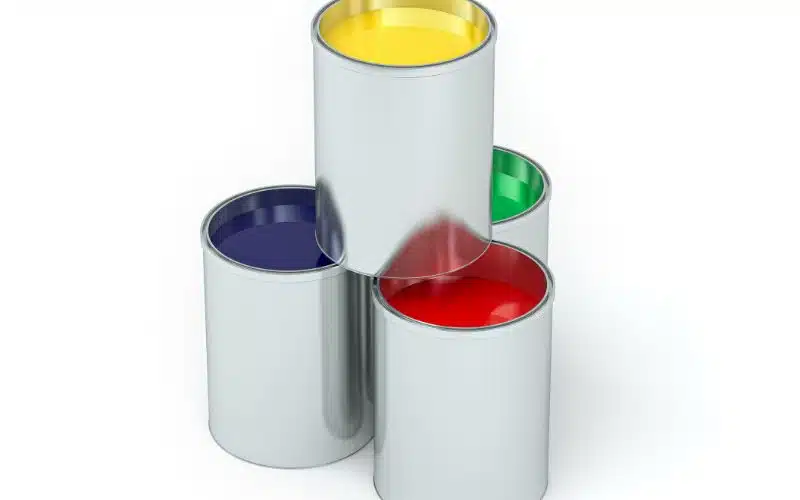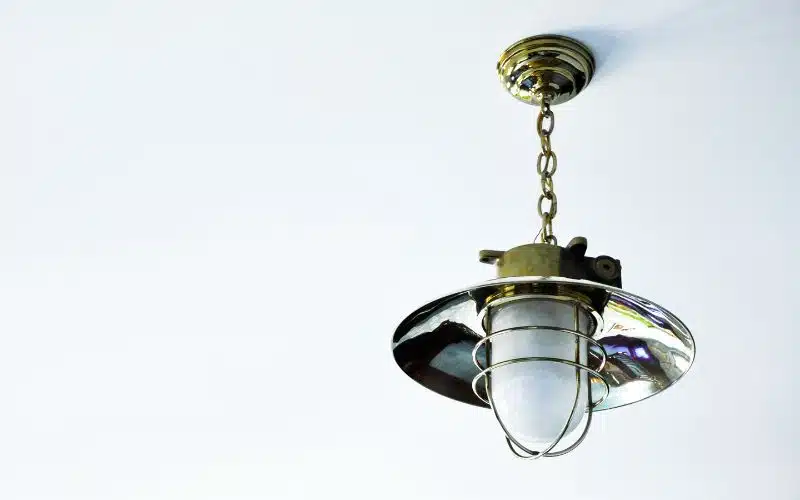Selecting the correct size of the drywall is the first step to take when purchasing your drywall.
Thinner drywall panels like the 3/8 and 1/4 inch thick drywall are more flexible and tend to break easily.
On the other hand, 1/2 and 5/8 inch thick drywalls are more sturdy though heavy.
However, you need to consult your local building codes to verify that you are using the right size of drywall.
The thickness of the drywall you require essentially depends on the purpose you intend to apply it. For example, if you are working on your home project, using 1/2-inch thick drywall is a better choice because it has more thickness and different varieties. However, if you need to repair old drywall, using 3/8-inch drywall is appropriate.
3/8 Or 1/2 Drywall For Walls

1/2 inch thick drywall is the best for your drywall interior walls. The size is a better option because it is more sturdy and has different types, unlike the alternative.
The 3/8-inch drywall is uncommon and has only one standard variety. It is also less sturdy and has little resistance to water.
Using the 3/8 inch thinner drywall panels for your walls can cost you a lot of repairs in the future, as it is prone to damage over time.
Not only is the 1/2-inch drywall sturdy and durable, but it also has a fire-resistant drywall variety.
If the weight of the 1/2-inch thick drywall is a problem, you can opt for the lightweight type.
However, if you must use the 3/8 inch drywall, you can double the thinner drywall panels during the application, though it might cost more.
It is advisable to install the standard 1/2-inch drywall with an assistant because of its heavy weight.
3/8 or 1/2 Drywall for Ceiling
For your ceiling drywall installation, thicker drywall is a better choice, which means 1/2-inch thick drywall is optimal.
However, you should consult your local building codes before choosing.
If there is no specific size for ceiling drywall in your local building codes, the 1/2-inch moisture-resistant drywall is your best option.
The 1/2-inch drywall is more common and durable than the 3/8-inch thinner drywall panels.
You can use the latter option if the frames supporting the 3/8 inch drywall are 16 inches apart. Also, avoid using water-based texture as it is not a moisture-resistant wall.
Finally, you may be unable to use insulators, install lights, or other ceiling fixtures if you use 3/8-inch drywall.
If you want to use more robust drywall than the 1/2-inch drywall, opt for the 5/8-inch drywall for your ceiling.
The 5/8 inch drywall also has a fire-resistant variety. Though you can use any drywall size, purchasing thicker drywall panels for your ceiling is more cost-effective.
If you use the 3/8-inch panel, it might sag between the ceiling beams over time. If you use lighter 3/8 inch drywall panels, ensure to fasten the drywall panels to the ceiling beams every 12 inches.
Though you can hang a 3/8 inch drywall on your ceiling, it is more helpful in repairing holes in your drywall ceiling.
If you cannot lift the 1/2-inch thick drywall, you can purchase a drywall lift to assist you in hanging the drywall on the ceiling.
Also, if you are doing this yourself, try to work with a partner to avoid any health risks.
Difference Between 3/8 and 1/2 Drywall
The 3/8-inch and 1/2-inch drywalls are good options for your drywall installation, though this depends on what you plan to do with the drywalls.
The 1/2-inch thick drywall is thicker and more durable than the 3/8-inch drywall. It also has a variety of sizes, unlike the 3/8-inch drywall.
The 3/8-inch drywall also has a lighter weight and is suitable for repairs.
Below are some in-depth differences between the 1/2-inch thick drywall and the 3/8 thinner drywall panels:
#1. Weight
The weights of the fire-resistant 1/2-inch drywall and the 3/8 inch are apparent differences.
The heavier 1/2 inch is more long-lasting than the 3/8 inch drywall. Though the 1/2-inch thick drywall is durable, its weight often slows down the work process.
Apart from the thickness, there are other size differences between the 1/2-inch and 3/8-inch drywall.
The 1/2-inch drywall is widespread and has varying sizes. For example, a 4′ x 8′ 1/2 inch drywall weighs about 57.6 lb, while the 4′ x 8′ 3/8 inch drywall weighs 43.65 lb.
The 1/2-inch thick drywall also has a lighter version that weighs about 39.2 lb.
#2. Usage
You can use the ¾-inch drywall to cover holes in walls or ceilings since it is not as sturdy or thick as the 1/2-inch thick drywall.
If you install a 3/8 inch thick drywall on your wall or ceiling, it can lead to further issues in the future. It can sag from lack of sturdiness and can make painting difficult.
The 3/8-inch thickness is suitable for patching holes and changing drywalls. You can also use it to fix worn plasters.
However, though you can install the 3/8-inch drywall, it might not be cost-effective in the long run.
1/2-inch drywall, on the other hand, is more suitable for ceiling and wall drywall installation.
It is heavier and more durable than the 3/8-inch thick drywall, so that you can use it for your ceiling and walls.
The sturdier drywall has different varieties, like the fire-rate and moisture-resistant drywall variants.
#3. Variants
Since there are varying types of drywall, getting a specific type to ease a particular purpose will be more effective in your drywall installation.
However, a 3/8 inch drywall does not have other types apart from the standard.
1/2-inch drywall, on the other hand, has different types, including fire rating and moisture-resistant drywall.
The fire-resistant drywall, though more expensive, is more effective in providing safety from fire, unlike the standard variant.
#4. Sizes Available
The size of the drywall you intend to use is also essential. Installing the correct size will increase the rate of productivity during installation. However, heavy drywall panels may be difficult to use.
However, since 1/2-inch drywalls come in varying sizes, it gives you a different size option, unlike the 3/8-inch drywall.
The sizes available in 1/2 inch thick drywalls include 4′ x 8′, 9′, 10′, and 14′. The 3/8-inch drywall only comes in one size, hindering its use and flexibility.
| Difference factor | 1/2-inch drywall | 3/8-inch Drywall |
|---|---|---|
| Weight (4′ x 8′) | 57.6 lbs | 43.65 lbs |
| Variants | Lightweight, Fire rating | None |
| Usage | Primarily used in walls and ceilings. | You can use it for repairs. |
| Durability | It is durable. | It is not as durable as the 1/2 inch Drywall. |
| Sizes available | 4 feet x 8, 9, 10, 12, and 14 feet Sheets | 4′ x 8′ Sheets |
Should I Use 1/2 or 3/8 Drywall?
From the difference above, 1/2-inch drywalls are better and more cost-effective than the alternative.
However, this choice frequently depends on the purpose of the drywall. If you require the drywall for repairs or your pantry paneling, the 3/8-inch drywall is a better choice.
However, if you need to install durable drywalls for your ceiling and walls, the 1/2-inch drywall is the best option for the task.
You can also purchase different variants like lightweight or fire-resistant drywall to make your work easier.
3/8 or 1/2 Nap for Drywall
The 3/8-inch nap roller is more suitable for your paints.
Both 3/8 and 1/2 nap rollers are appropriate for painting your drywall, though the 3/8 is thicker and more convenient for rough areas of your home drywall interior walls.
The 1/2 nap roller is more suitable for moderate texture surfaces, while the 3/8 nap roller is best for light texture surfaces and interior walls.
Final Thoughts
Depending on the purpose you will use it for, the drywall sheet size can vary. The 1/2-inch thick drywall has more varieties and is cost-effective, unlike the 3/8-inch drywall.
The thinner 3/8-inch drywall panels are lighter and more suitable for repairs and cabinet paneling.





